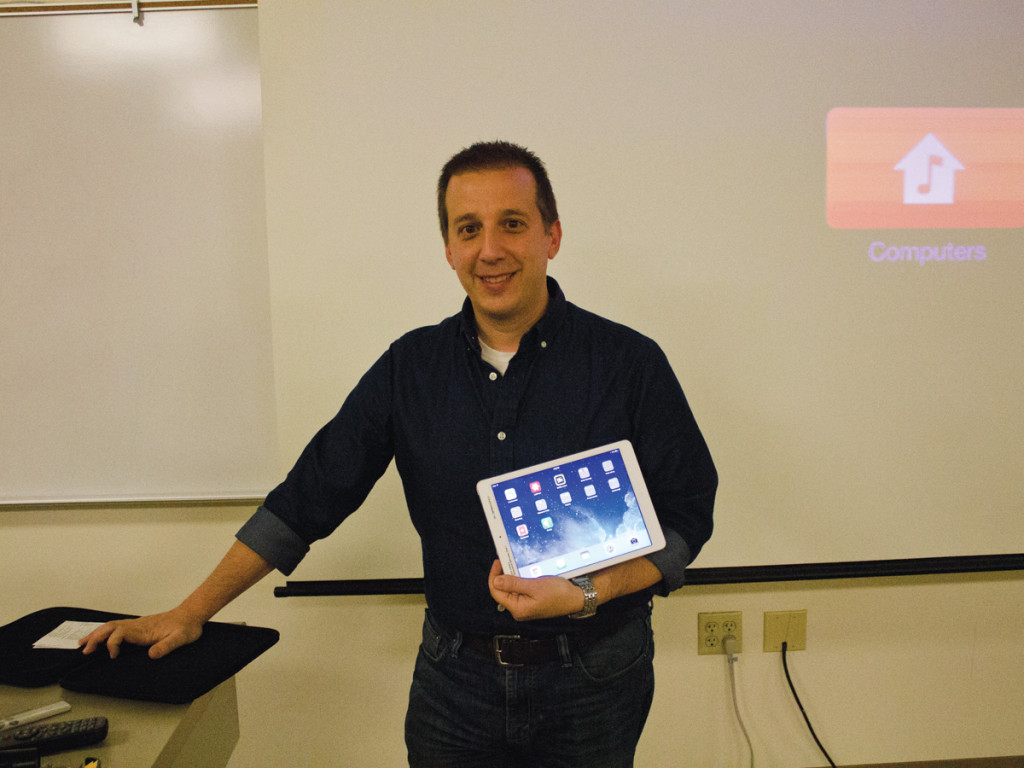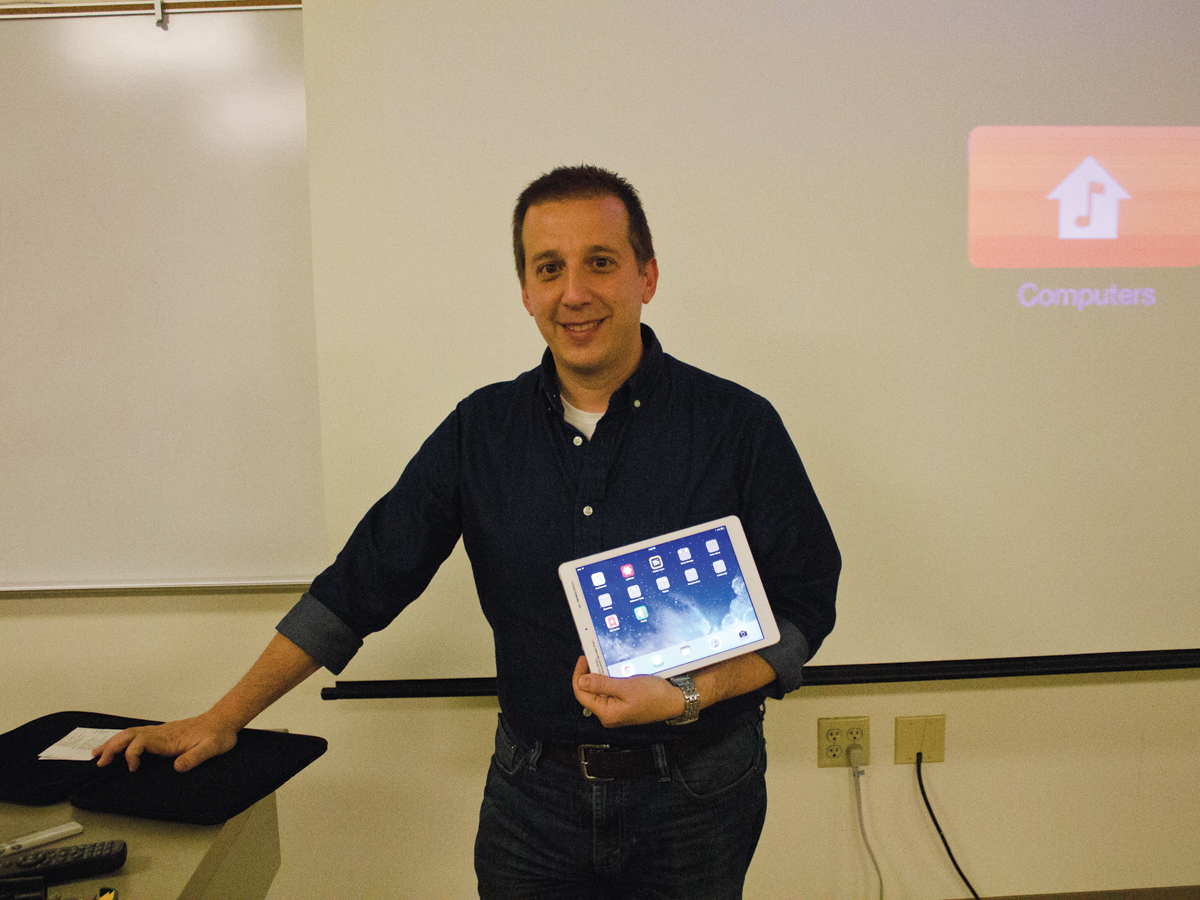
There is generally an app for every aspect of our lives nowadays, so why not incorporate them into our educational endeavors? Many may find themselves struggling to catch up with the notes for a class or waiting in endless lines to scan the pages of a textbook. Several students gathered in Rivera 140 on Wednesday evening to learn about how not to encounter problems such as these by simply downloading a few apps.
Oftentimes, many of us may find ourselves dozing off from boredom while we’re stuck in that two-hour wait at Boiling Crab, wishing that we could instead catch up on all of the research and reading we had to have completed about a week ago at school. Cisco, the creator of WebEx — an app to stay connected to your meetings anywhere — has developed a new app titled AnyConnect. When trying to connect to a database linked from library.ucr.edu, like JSTOR, you may recall that AnyConnect is one of the options for connecting to a database off-campus. Now that there’s an app for it, students can easily access about 99 percent of the school’s database without a laptop at places like Starbucks, Barnes & Noble and Target with a simple log-in with “anyconnect.ucr.edu” as the server and your school net ID and password.
You know how you’ve forgotten your password for a number of various websites and accounts so many times that you can’t even keep track and then you record all your passwords down on a sticky note or notepad only to forget where you’ve placed that too? Well, now we have LastPass to collect and manage all of our online passwords securely. Just keep in mind that when you are creating the account, it’s highly recommended that you develop an extremely strong password as this will be the “only one you’ll ever have to memorize” according to Chris Martone, the instructor of the event.
Another app that is highly encouraged is the Blackboard Mobile iLearn. You might be hesitant to download this app after reading several poor reviews on it, but Martone assures us Highlanders that we shouldn’t encounter any problems with the app once we understand how to maneuver through it.
There are multiple types of apps that allow you to share your files between several devices, but the “granddaddy of them all is Dropbox,” according to Martone. The single drawback of Dropbox is that they provide only the first five gigabytes for free and extra storage costs more, though Martone reassures us that five gigabytes is more than enough storage space. Martone also introduced us to OneDrive, a Microsoft program that saves all documents to — yeah, you guessed it — one drive and provides unlimited gigabytes. Google Drive is also a common app to access and import all accounts and documents as a sort of back-up system.
Two highly recommended apps for taking notes are EverNote (slightly more compatible for Mac users) and OneNote (preferable for Windows to use all of the app’s functions) as they allow one to compile all notebooks into a single device. One may easily create a notebook for each enrolled class and add pictures, videos and even audio files while also having the ability to share files and scan documents and books. Many students may have encountered a difficulty with note-taking on a mobile device since they are unable to add in their own drawings. Notability allows one to both type up notes and draw in diagrams and charts with the touch of a finger. Unfortunately, Notability is only available for Apple products for a fee.
More than enough times, I’ve walked into the Rivera Library to find an endless line of people awaiting their turns to scan a textbook. No longer are those dreadful scanning lines necessary with these free apps that allow us to do so with the tap of a button. Scanbot is able to create a notebook of scans and upload them onto other devices using cloud storage. Other notable scanning apps include Scannable and GeniusScan. Simply point your tablet toward the document and allow it to focus and before you know it, the picture has been speedily snapped and scanned onto your mobile device.
Writing college papers on a tablet couldn’t be any easier with these useful apps. Pages and Numbers for Mac, as well as Google Docs and Microsoft Word are all easy-to-use document apps. If you find that you would like to continue working on a document on a desktop, you can save the document directly on your device and email it to yourself to download onto a computer system.
What many students do not realize is that most, if not all, of these apps can actually be used together. That means that we should be able to share what we have scanned with our cloud and note-taking apps and even access them on presentations and group projects. Students should no longer have any reason to fall behind on their studies with these user-friendly apps.








